Hyphens usually join words together while dashes tend to separate words.
In this post, we’ll give you the main differences between the hyphen vs. dash and let you know when to use which.
Main Hyphen vs. Dash Takeaways:
- Hyphens are not the same as dashes.
- Hyphens are often used to connect two or more words to form compound words or express double-digit numbers.
- You can substitute an em dash for a comma, colon, or parenthesis to create emphasis. There are two types of dashes: en dashes and em dashes.
- Dash symbols are longer than hyphens
- The en dash can be used to express a range of numbers or to denote connections between words.
- Typically, dashes are written without spaces before and after them.
You might be wondering how to draw the line—literally—in the battle of hyphen vs dash. This three-way clash among punctuation powerhouses pits the hyphen against two types of dashes.
Who emerges victorious? That depends entirely on what you want to accomplish in your sentence.
Hyphens go against not just one but two kinds of dashes. But before we dive into the differences among hyphens and dashes, it’s useful to understand what a dash is.
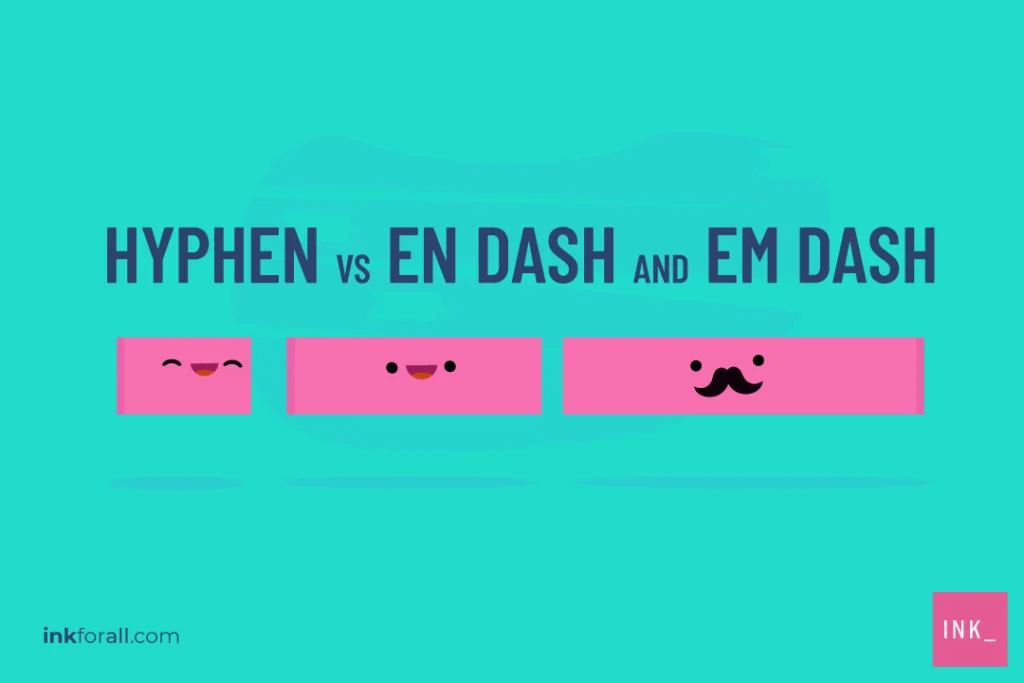

What is the Difference Between a Dash and a Hyphen?
The horizontal line that represents a hyphen is shorter when compared with the line for the dash. Besides their varying lengths, dashes andhyphens also have different functions in a sentence.
A hyphen is handy for joining words or parts of words in a sentence and spelling out double-digit numbers. On the other hand, writers use dashes to indicate a range or to signal a sentence break.
For example, compound words such as over-the-counter and mother-in-law are hyphenated. Similarly, hyphens are essential when spelling out numbers between twenty-one and ninety-nine.
Which is Longer: a Hyphen or a Dash?
A dash is a punctuation mark that’s represented by a horizontal line. It may be used to indicate a pause, represent missing letters, or denote connections. A dash is longer than a hyphen.
There are two types of dashes: the em dash and the en dash. The em dash has this name because it’s slightly longer, about the size of the letter M. Similarly, the en dash is slightly shorter and about the size of the N. Dashes are also used in mathematics to represent subtraction.
How Do You Use Dashes in Writing?
When writing, dashes are distinguished by size. The smallest is the hyphen, which is the equivalent of the minus side. It’s found on most keyboards to the immediate right of the zero. Slightly longer than a hyphen, the en dash is the same width as the letter N is. It can be created in most word processors by holding down the ALT key and typing 0150. Spanning the width of the letter M, the em dash is the longest of the dashes. It can be created by holding down the ALT key and typing 0151.
Typically, hyphens and dashes don’t have spaces on either side of them.
But, some style guides do prefer spaces before and after the em dash. The most important thing to remember when writing with dashes is to be consistent.
What is the Proper Way to Use a Hyphen?
There are six correct uses of hyphens in writing. Use hyphens to create compound words and to express numbers. You can also use a hyphen to indicate spelled-out words and when dividing one word between two lines of text when there isn’t enough space. In Creative Writing, hyphens help indicate a stammer or the way a character speaks. Using a hyphen can also prevent readers from misinterpreting words by adding emphasis.
Let’s look at each of these uses with examples:
1. Creating Compound Words
You can use Hyphens to link up two or more words that are working in tandem. The result is a single compound word.
If you’re following a specific style guide or dictionary, it’s a good idea to consult it before hyphenating compound words. Compound words that have been in use for a while are commonly spelled without a hyphen.
2. Expressing Numbers
Hyphens are used when writing out double-digit numbers or fractions.
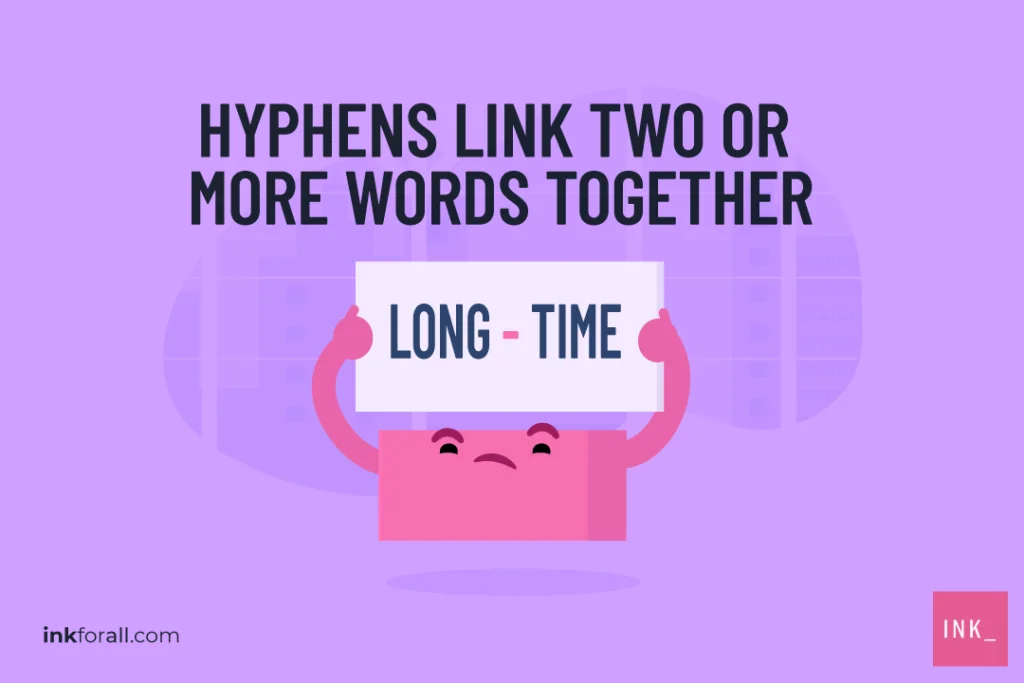

3. Indicating Spelled-Out Words
Put them between the letters of a word and hyphens indicate a word that is spelled out letter-by-letter.
4. Dividing Words Between Two Lines
A hyphen can divide a multi-syllable word between two lines of text. This happens when the line doesn’t contain enough room for the entire word.
The word should always be divided between syllables, and a single-syllable word should never be split.
Example


Prefixes such asall, ex, and self should be joined to words using a hyphen. Suffixes such as elect should also be attached using hyphens.
You can also use hyphens to connect prefixes such as un and pre to capitalized words.
5. Indicating a Stammer
When writing dialogue or transcribing verbal communications, hyphens can be used to indicate a stammer.
6. Preventing a Misreading of Words
Hyphens help clarify the meaning of words and prevent misreadings.
Do you Capitalize After a Hyphen?
The answer on whether to capitalize hyphenated words in titles depends on the style guide you’re using — The Chicago Manual of Style or The Gregg Reference Manual.
The Gregg Reference Manual recommends always capitalizing the first element of a hyphenated word. However, you can only capitalize the second element if they’re not articles, prepositions, or conjunctions.
This includes words like at, by, for, in, of, off, up, and, as, but, to name a few.
The Simple Rule — meaning acceptable method but not preferred — of Chicago Manual of Style recommends capitalizing only the first element of a hyphenated word. That’s unless the word that follows such a hyphen is a proper noun or adjective.
However, the rule is not that simple when using the traditional Chicago Manual of Style.
The En Dash: Punctuation’s Middleweight
The en dash is the Goldie Locks dash. It isn’t as short as the hyphen. But, it’s not as long as the em dash.
In the hyphen vs. dash battle, the en dash comes with several grammatical functions.
1. Specifying a Range
Use the en dash to connect things related by distance. Examples include time spans and ranges of numbers.
When you use an en dash this way, it signals that there is a range. It covers all numbers, dates, or times that fall between the two things on either side of the dash.
2. Denoting Scores
In sports or other games, an en dash helps communicate scores.
3. Showing Connections Between Words
The en dash has a slightly more complex job than the hyphen when it comes to showing connections between words. In particular, it may be used to link two words that are already hyphenated, creating a compound adjective.
Notice in the second example how pro-choice and pro-life are each hyphenated, while the en dash connects them.
4. Adding Prefixes to Proper Nouns
You can also use the en dash when adding prefixes to proper nouns that include more than one word.
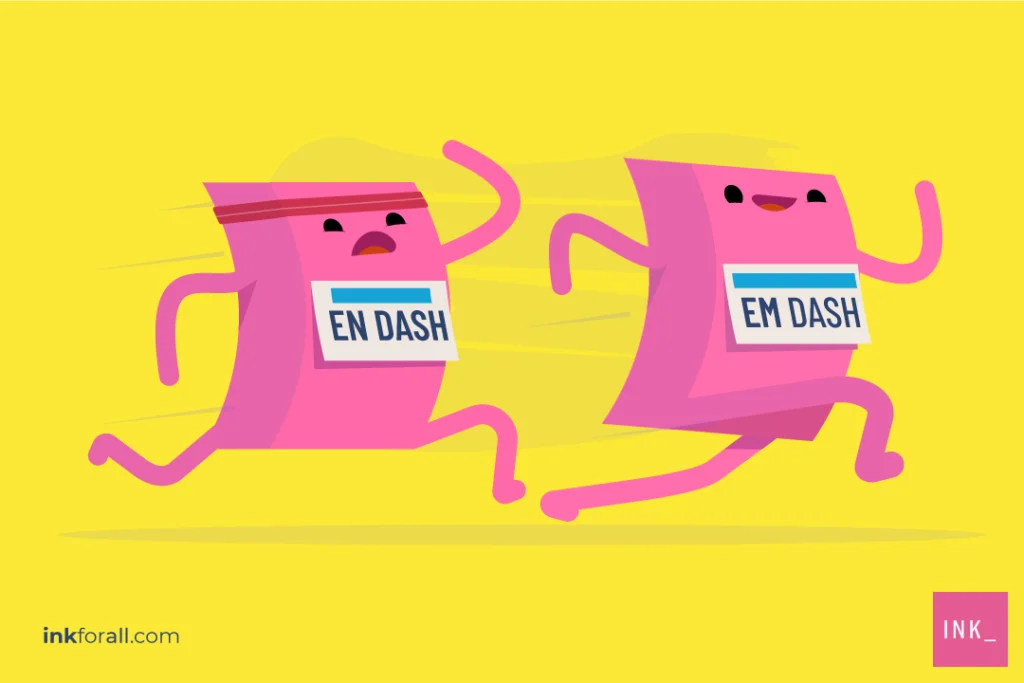

Punctuation Powerhouse: The Versatile Em Dash
The em dash is one of the English language‘s punctuation powerhouses. It has a special place in informal writing, where it can take the place of a comma, colon, or parenthesis.
Here are a few ways the multifaceted em dash may be used in a sentence:
1. To Signal a Sentence Break
The em dash can take the place of a comma to signal or emphasize a break in a sentence. This is especially helpful when setting apart clarifying information (known as appositives).
2. To Emphasize the Conclusion of a Sentence
An em dash can replace a colon. This helps emphasize the conclusion of a sentence.
3. To Express a Sudden Shift in Thought
Sometimes, a sentence can take an abrupt turn. An em dash helps a reader follow a sudden shift in thought or direction.
4. To Show an Interruption
When writing dialogue or transcribing verbal communications, em dashes signal interruptions.
5. To Connect a List and Its Unifying Idea
When an em dash follows a list, it can provide focus. This helps connect the list to the overall point or idea.
6. To Signify Missing Letters
Em dashes strung together signify an omission.
Two consecutive em dashes indicate missing letters in a word. Three em dashes together represent a missing word.
This technique often helps censor expletives. Standard rules of grammar apply to punctuation that surrounds the missing letters and words.
7. To Indicate Parenthetical Information
Em dashes effectively set off parenthetical expressions. These are words or phrases that don’t change a sentence’s primary meaning or grammatical structure.
A Grammar Best Practice is that a sentence should have no more than two em dashes for the sake of clarity.
Hyphen vs. Dash: a Split Decision
Quick Hyphen vs. Dash Grammar Quiz
Hyphen vs. Dash Question #1
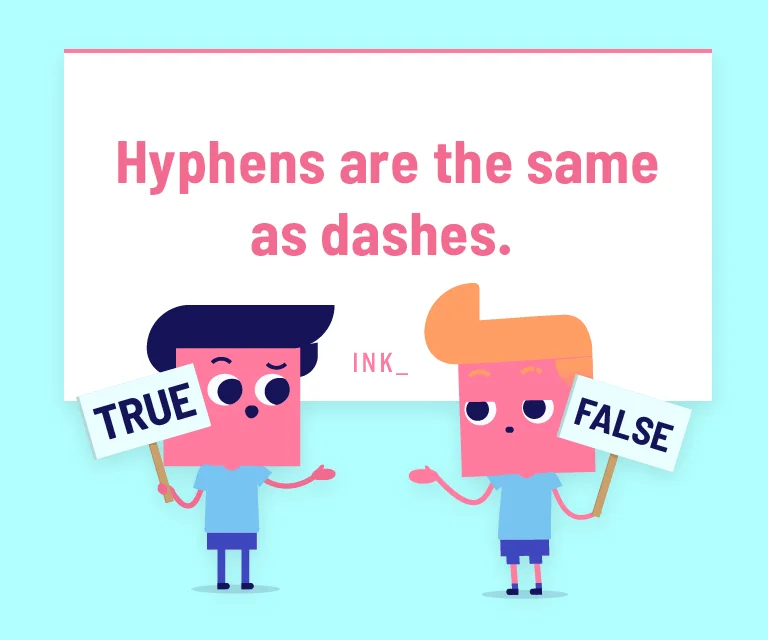

The answer is FALSE. Hyphens have a shorter length than dashes.
Dash Question #2
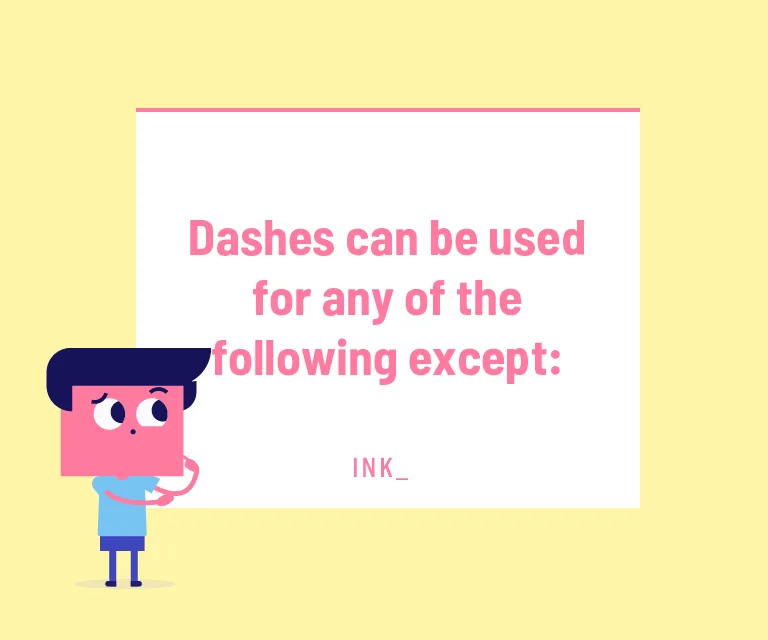

The answer is A. You can only use a hyphen to create compound words.
Em Dash and En Dash Question #3
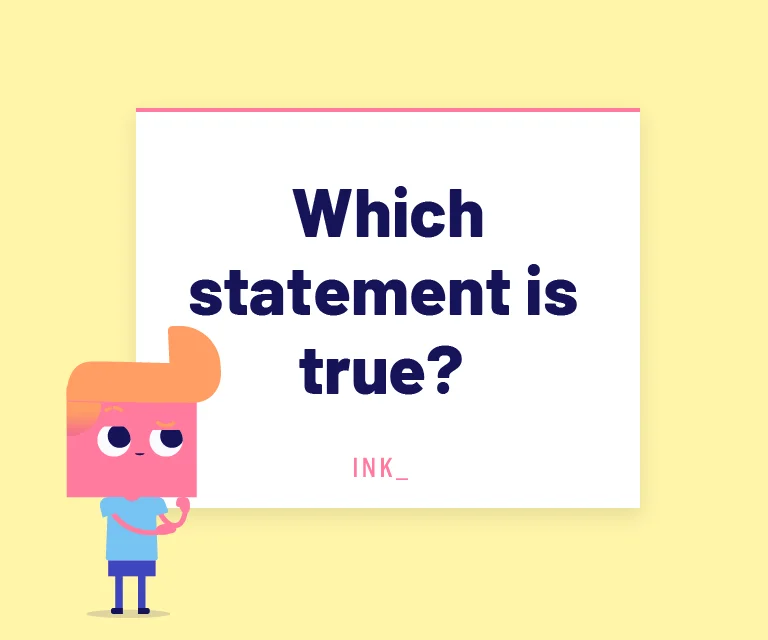

The answer is C. The em dash has that name because it’s slightly longer than the en dash. It’s about the size of the letter M.
Hyphen Question #4
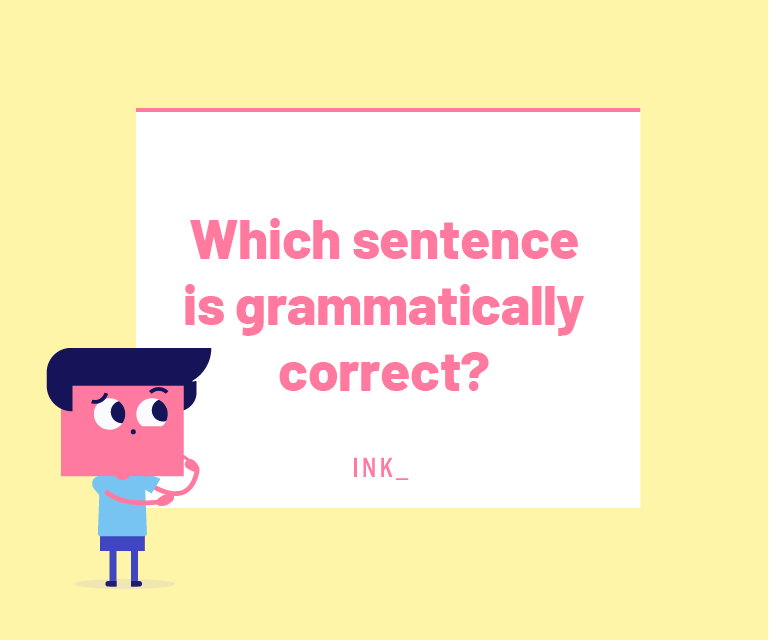

The answer is A. Hyphens are used when writing out two-digit numbers or fractions.
En Dash Question #5
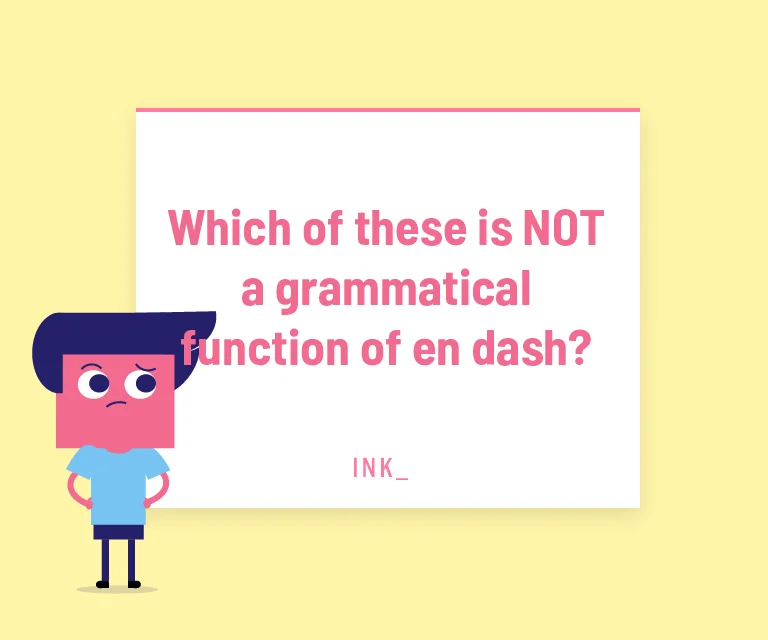

The answer is D. Hyphens are ideal for indicating a word that is spelled out letter by letter.
Em Dash Question #6
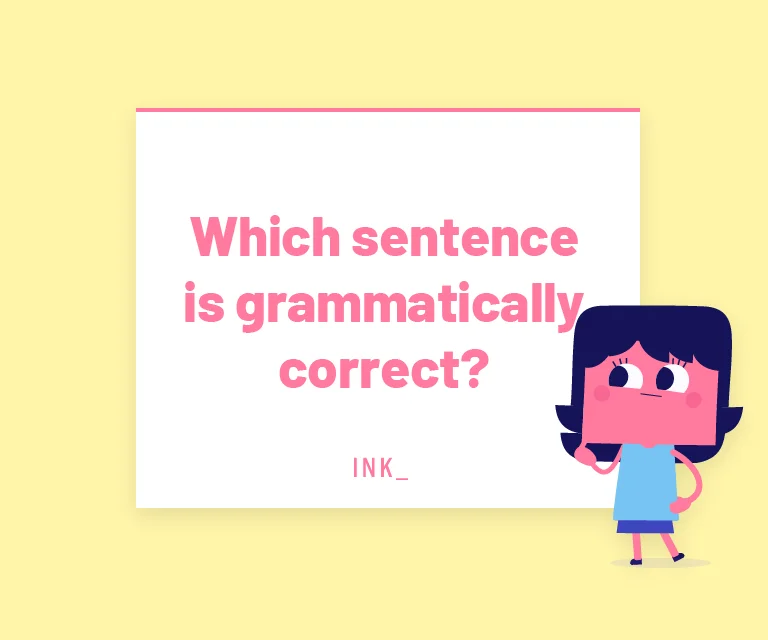

The answer is A. Em dashes effectively set off parenthetical expressions.
